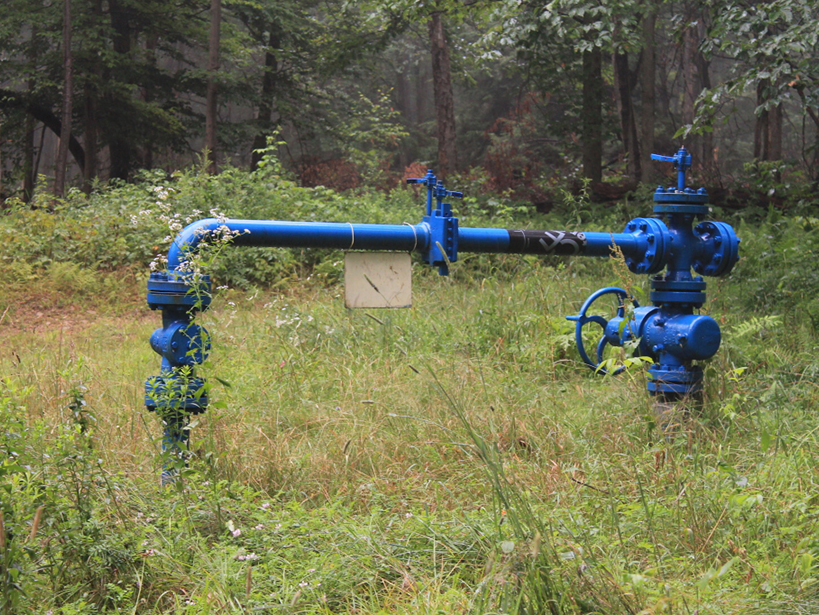Source: Water Resources Research
Abandoned oil and natural gas wells that are poorly sealed can leak methane gas into the ground, contaminating water supplies and polluting the atmosphere. In a recent study, Roy et al. used three-dimensional modeling to track the behavior of methane that leaks from a well into a shallow aquifer. Their results suggest that certain types of aquifers may be more vulnerable to contamination from methane leaks.
The researchers ran simulations of methane leakage based on a 640-meter-deep well near Lloydminster, Alberta, Canada, that produced oil in the 1980s. Scientists first noticed leaks along the abandoned well in 1988 and later drilled several observation wells in the confined aquifer to monitor it. Isotope signatures indicated that anaerobic microbes were biodegrading much of the methane, with hydrogen sulfide as a by-product.
In the present study, the team fed groundwater flow data, methane leakage rates, and other observations from the Alberta well into a model called BIONAPL/3D, which was previously developed by one of the members of the team for simulating the behavior of dissolved contaminants in aquifers. A second series of simulations started with an unconfined, uncontaminated aquifer (modeled after an aquifer in Ontario) and added a hypothetical leaky well nearby, constrained with the same leakage rates from the first set of simulations
The simulations revealed the shape, size, and duration of the dissolved plume formed by leaked methane, as well as its rate of biodegradation. However, the precise fate of the methane differed between the two scenarios. This difference occurred because the Alberta well was in a confined aquifer (beneath a less permeable layer of clay till) and the Ontario example was in an unconfined aquifer (with the water table as the top boundary).
In the unconfined aquifer scenario, more methane escaped into the overlying soil or to the atmosphere. The methane did not migrate as far, and less hydrogen sulfide was produced since microbes could use oxygen as well as sulfate to degrade methane. Given these findings, the authors suggest that methane leaks into unconfined aquifers may result in less aquifer contamination than equivalent leaks into confined aquifers. (Water Resources Research, doi:10.1002/2016WR018686, 2016)
—Sarah Stanley, Freelance Writer
Citation:
Stanley, S. (2016), What happens to methane that leaks from abandoned wells?, Eos, 97, https://doi.org/10.1029/2016EO057195. Published on 10 August 2016.
Text © 2016. The authors. CC BY-NC-ND 3.0
Except where otherwise noted, images are subject to copyright. Any reuse without express permission from the copyright owner is prohibited.

